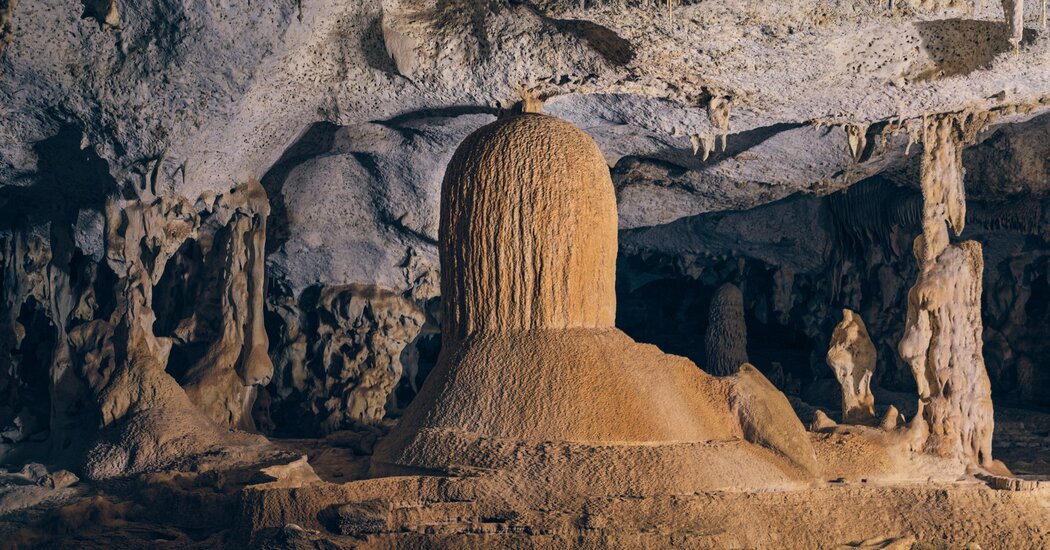“This curious world,” Thoreau wrote, “is more wonderful than convenient,” and his words came to me as I gathered my hiking boots and helmet, laxatives and Dramamine, batteries, baby wipes and safety wardrobe of neon orange. After nearly a year of bureaucratic tribulations, I was finally going to Mona. The two most popular tour companies never wrote me back, so I planned the trip with Jaime Zamora, a freelance guide who had been exploring the island for more than 40 years. But it was better this way. I liked the purity of his passion and his disdain for institutions. Instead of a website or brochure, he directed me to a private Facebook group where he maintained a meticulous archive of old maps, news clippings and personal photographs of artifacts he found on the island: a creamy conch shell with a hole drilled through it, the ornamental handles of a broken urn.
In December, the stars suddenly aligned: Our permits were approved, the seas calmed and we pulled a team together. I crossed Midtown with cash in my coat to wire to a boat captain named Mikey. My friends Ramón and Javier came through; so did my friend Elisa. Our photographer, Chris, would bring his partner, Andrea. Jaime recruited some old comrades: Chito, Manuel and Charlito, the cook. The ecologist Hector Quintero, known as Quique, signed on and suggested we might invite Tony Nieves, who had recently retired from 33 years as Mona Island’s director. Finally, Jaime texted to say the moon would be full for our visit: “In one week,” he promised, “your magic will begin to shine.”
The boats arrived at the pier in Joyuda, on the western shore of Puerto Rico, near dawn. We were relieved to discover that the sea was quiet: “plancha’o,” the captain said, like an ironed sheet, only this gracious once or twice a year. He warned me not to get the wrong impression: “Mona no es así.” Still, I could feel it when we crossed into the Mona Passage proper, where the waters of the Atlantic and the Caribbean come together in a cauldron of treacherous crosscurrents. The prow began to jump across the waves, so that we had to brace hard against the railing to keep our tailbones from bruising. I realized I had never been this close to the water for this long — I always approached Puerto Rico from above — and I tried to imagine the first people who came this way, rowing with no land in sight, searching the sky for congregations of clouds, the sign of green things breathing.
Over the…
Click Here to Read the Full Original Article at NYT > Travel…
